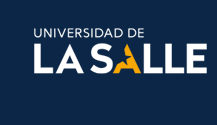Title
The limit in the domestic space: An approximation from and towards the phenomenology: Rogelio Salmona’s Riofrio House
Resumen
En este documento se presenta una reflexión en torno al límite de la casa desde la fenomenología. A pesar de las definiciones filosóficas del límite de Aristóteles, Heidegger, etc., es Henry Maldiney –basado en la obra de Merleau-Ponty– en quien se apoya la búsqueda de esta propuesta debido a la importancia que le otorga al cuerpo y su movimiento en la concepción y posterior vivencia del hábitat, y a los pares dialécticos donde residen las dimensiones profundas de la arquitectura. Esta base teórica permite hacer un recorrido imaginario de una casa proyectada por Rogelio Salmona, donde la cuestión del límite parte de su constante meditación de las nociones de acontecimiento y errancia.
Palabras clave
límite, cuerpo, movimiento, casa, acontecimiento, errancia
Abstract
This is a reflection on the boundaries of the house from the phenomenology viewpoint. Despite the philosophical definitions of boundary from Aristotle, Heidegger, and others; it is on Henry Maldiney’s thesis, starting from Merleau-Ponty’s work, that our research is based on; due to the importance that it applies to the body and its movement while conceiving and subsequently experiencing space. We are also interested in Maldiney’s notion of logical coupling in which dwells the profound dimensions of architecture. This theoretical basis allows creating an imaginary promenade through one of the houses designed by Rogelio Salmona, in which the question on boundaries arises from this architect’s permanent meditation on the ideas of event and wandering.
Keywords
boundary, body, movement, house, event, wandering
Fecha de publicación
2010-06-01
Licencia Creative Commons

This work is licensed under a Creative Commons Attribution-Noncommercial-No Derivative Works 4.0 License.
Tipo de documento
Artículo de investigación
Editorial
Universidad de La Salle. Ediciones Unisalle
Citación recomendada
Quintana Guerrero, Íngrid
(2010)
"El límite en el espacio doméstico: una aproximación desde y hacia la fenomenología
La Casa Río Frío de Rogelio Salmona,"
Traza:
No.
1
, Article 7.
Disponible en:


